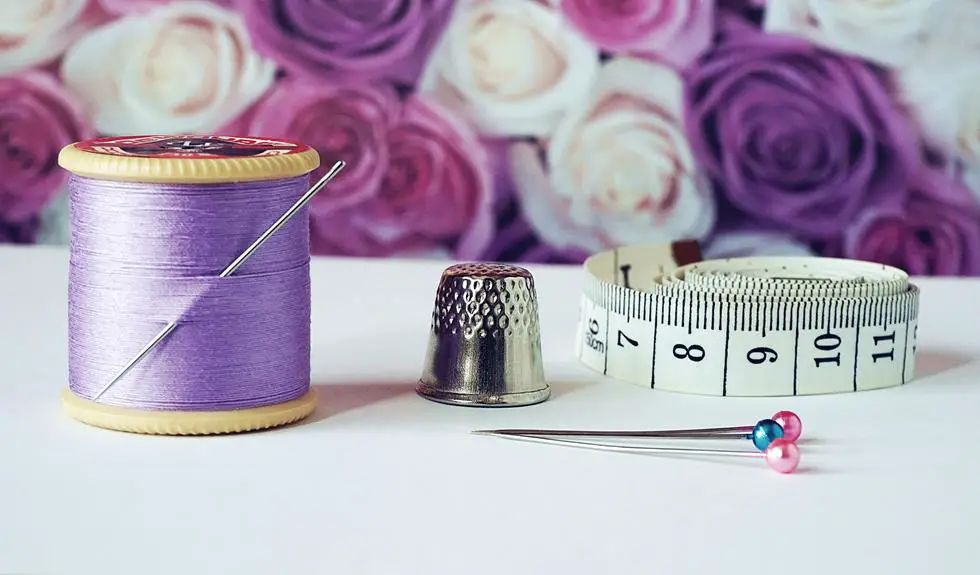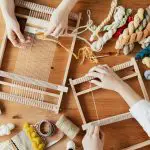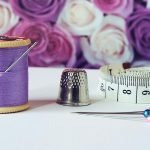When you're ready to sew with batiste fabric, it's crucial to understand its delicate nature and how that influences your approach. You'll want to gather the right tools, from sharp scissors to lightweight pins, to ensure your project goes smoothly. As you cut and sew, remember that a fine needle and longer stitch length are your best friends. But that's just the beginning; mastering the techniques for handling batiste can make all the difference in your final piece. Curious about the specifics? Let's explore those essential techniques together.
Table of Contents
Understanding Batiste Fabric
Batiste fabric is a lightweight, sheer textile that's perfect for creating delicate garments and soft home décor items. It's often made from cotton, linen, or a blend, giving it a soft feel and breathable quality. When you work with batiste, you'll appreciate its versatility—it's great for everything from blouses to curtains.
One of the key aspects of batiste is its delicate nature, which means you need to handle it with care. Since it's lightweight, it can easily shift or slip while you sew. You'll want to use fine needles and lightweight threads to avoid damaging the fabric.
Batiste's sheerness adds a layer of elegance to your projects, making it ideal for layering or creating soft drapes. If you're looking to add a touch of sophistication to your wardrobe or home, batiste is an excellent choice.
Keep in mind that pre-washing your fabric before sewing is essential to prevent any shrinkage later on. This fabric can fray easily, so using a zigzag stitch or a serger can help keep your edges neat. Understanding these characteristics will make your sewing experience much smoother.
Preparing Your Sewing Tools
Gathering the right sewing tools is crucial for a successful project with batiste fabric. Since batiste is lightweight and delicate, having the appropriate tools can make your sewing process smoother and more enjoyable. Here's a list of essential tools you'll need:
| Tool | Purpose |
|---|---|
| Sharp Fabric Scissors | To cut batiste cleanly without fraying |
| Fine Needles | To prevent damage to the fabric |
| Lightweight Pins | To hold pieces together without leaving marks |
| Tailor's Chalk | To mark your fabric without residue |
| Sewing Machine | For efficient stitching on delicate fabrics |
Before you start, ensure your scissors are sharp and your needles are suitable for lightweight fabrics. It's also wise to pre-wash your batiste to prevent any future shrinkage. Lastly, consider using a walking foot on your sewing machine; it helps manage the fabric feeding smoothly, which is especially useful with such fine materials. Being prepared with these tools will set you up for a successful sewing experience with batiste fabric.
Cutting Batiste Properly
To achieve clean and precise cuts when working with batiste, you should always use sharp fabric scissors and take your time to align the fabric properly. Batiste is lightweight and can easily shift, so it's crucial to secure it before cutting. Use weights or pins to hold the fabric in place, avoiding any unnecessary movement.
When laying out your pattern, make sure the grainlines align correctly with the fabric's weave. This will help maintain the fabric's flow and drape. If you're cutting multiple layers, ensure they're stacked neatly to prevent uneven edges.
Before you start cutting, double-check your measurements. It's easy to make mistakes with such a delicate fabric. If you're working with a pattern, follow the cutting lines carefully. Take short, deliberate cuts rather than long, sweeping motions to maintain control.
Lastly, after cutting, handle the batiste gently. Its lightweight nature means it can fray easily, so keep the edges from snagging on anything. By following these steps, you'll set yourself up for success in your sewing project.
Techniques for Sewing Batiste
When sewing with batiste, it's essential to use a lightweight needle and a fine thread to avoid creating large holes in the delicate fabric. A size 70/10 or 80/12 needle works best, and a polyester or cotton thread in a fine weight will give you the results you want.
Before you start, make sure to stabilize the fabric. Use a lightweight fusible interfacing or a fabric stabilizer on areas that will bear weight, like hems or seams. This helps prevent distortion as you sew. If you're working with curved edges, consider using a bias tape or stay-stitching to maintain the shape.
Sew with a longer stitch length, around 2.5 to 3.0 mm. This will help the seams remain strong without puckering. Additionally, use a straight stitch or a narrow zigzag stitch for added flexibility.
When finishing edges, opt for a French seam or a narrow hem. These techniques not only provide a clean finish but also prevent fraying. Lastly, always press your seams gently with low heat to avoid damaging the fabric.
With these techniques, you'll find sewing batiste both enjoyable and rewarding.
Caring for Batiste Garments
Caring for batiste garments requires gentle handling to maintain their delicate texture and appearance.
When washing, always opt for cold water and a mild detergent. Hand washing is the best method, but if you're using a machine, choose a delicate cycle and place the garments in a mesh laundry bag to prevent snagging.
After washing, avoid wringing out the fabric, as this can distort its shape. Instead, gently press out excess water by rolling the garment in a clean towel. For drying, lay your batiste pieces flat on a drying rack or hang them to air dry, avoiding direct sunlight to prevent fading.
When it comes to ironing, use a low heat setting and place a thin cloth between the iron and the fabric to protect it. Always iron while the fabric is slightly damp for the best results.
Storing batiste garments also requires care. Use padded hangers or fold them neatly to avoid creasing. Avoid hanging them in damp areas, as moisture can lead to mildew.
Frequently Asked Questions
Can I Use a Regular Sewing Machine for Batiste?
Yes, you can use a regular sewing machine for batiste. Just make sure you have a fine needle and a lightweight thread. Adjust your machine's tension to avoid puckering and ensure smooth stitching.
What Types of Projects Are Best Suited for Batiste Fabric?
Batiste fabric's lightweight and breathable qualities make it perfect for delicate projects like blouses, summer dresses, and baby items. You'll love how it drapes beautifully and provides a soft touch against the skin.
Is Batiste Fabric Suitable for Beginners?
Yes, batiste fabric's lightweight and smooth texture makes it suitable for beginners. You'll find it easy to handle and sew, allowing you to practice your skills without overwhelming challenges. Plus, it drapes beautifully for various projects.
How Do I Choose the Right Needle for Batiste?
To choose the right needle, look for a fine needle, like a 70/10 or 80/12. These needles glide through delicate fabrics, preventing snags while ensuring clean, precise stitching for your project's success.
Can I Dye Batiste Fabric Easily?
Yes, you can dye batiste fabric easily! Just choose a fabric dye designed for delicate materials, follow the instructions, and soak the fabric. You'll achieve beautiful color while keeping its lightweight and airy qualities intact.
- How Does Ring Spun Cotton Affect Garment Fit and Shape Retention? - August 13, 2024
- What Are the Challenges in Producing Ring Spun Cotton? - August 13, 2024
- Is Ring Spun Cotton Suitable for Plus-Size Clothing? - August 13, 2024







